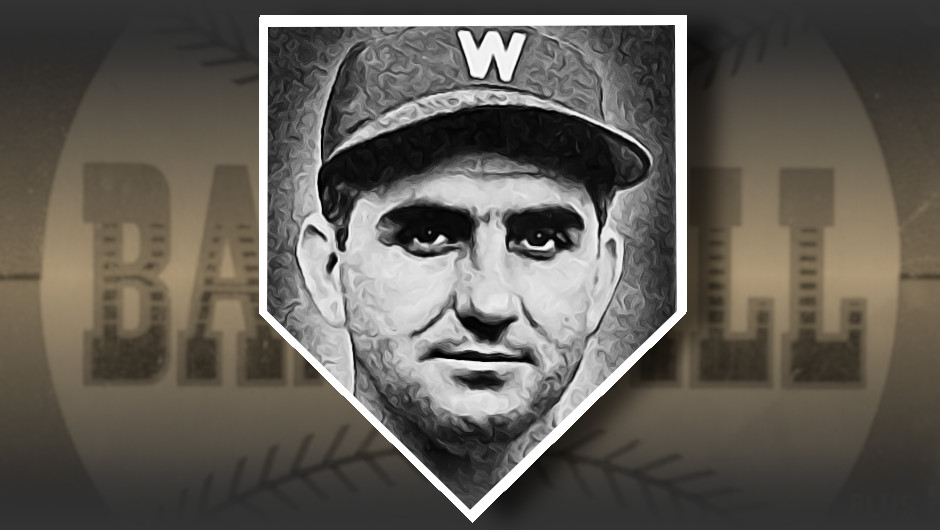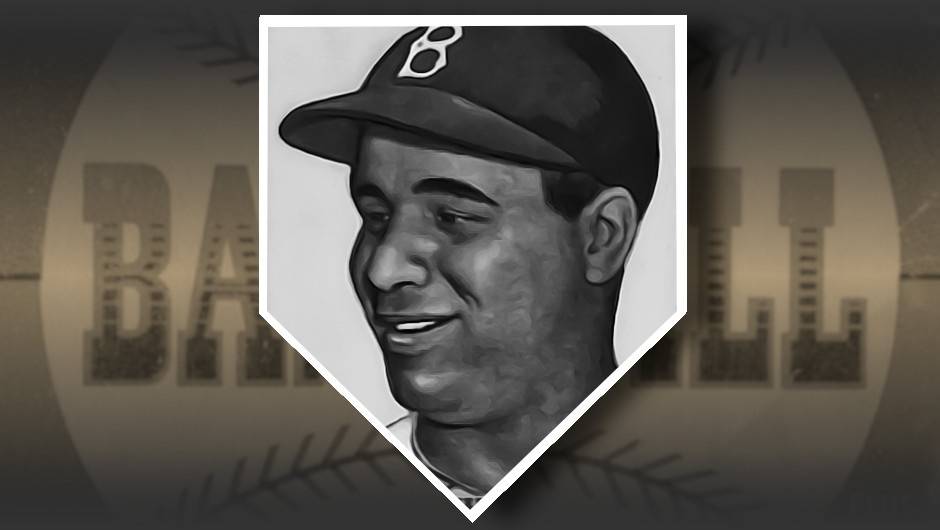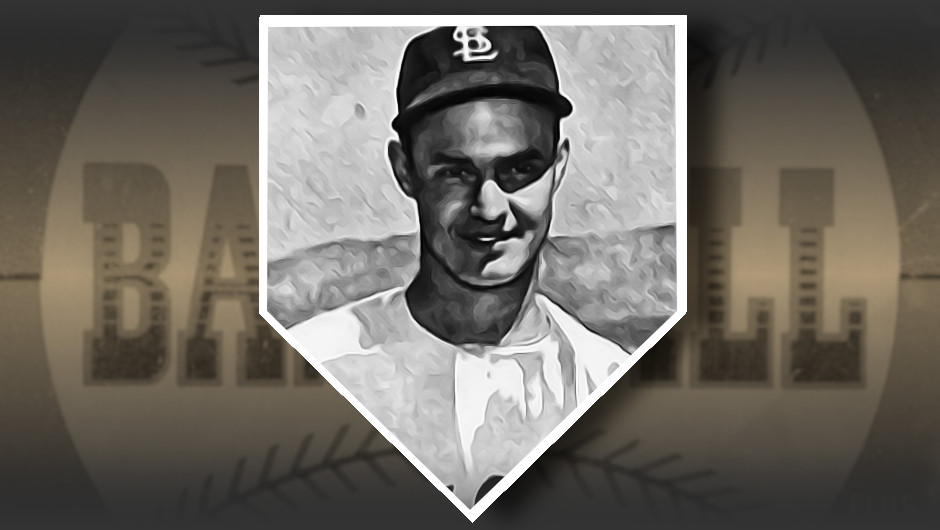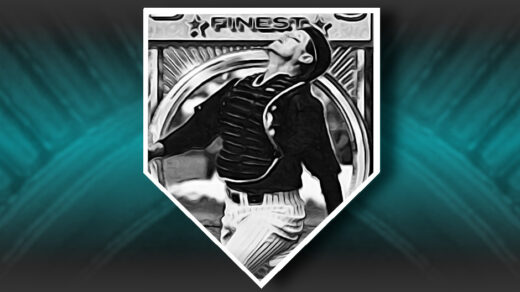Eddie Gaedel, all 3’7″ of him, never appeared on a Topps baseball card. Instead, his plate appearance in a late-season game in 1951 has become the stuff of legend and was first recorded on cardboard in the 1961 Nu-Card Scoops set.
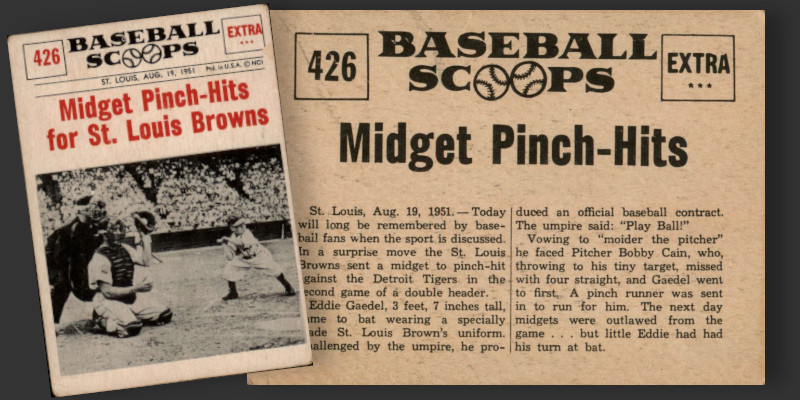
The title of the faux newspaper pretty much sums up what happened, but that hasn’t dimmed the story over the ensuing seven decades. Bill Veeck, sometimes likened to P.T. Barnum, had acquired the St. Louis Browns at the outset of the 1951 season and promptly set about the task of drumming up attendance and making every game a spectacle. Inbetween games of a double header, Veeck arranged for a paper mâché cake to be brought out to the field. Bursting out of the cake on cue to great fanfare was Eddie Gaedel, carrying a toy bat and dressed in a Browns uniform bearing the number ⅛. Amused but somewhat expecting something of this sort, the crowd cheered and went back to awaiting the second game.
The St. Louis lineup card given to the umpire had injured outfielder Frank Saucier penciled in as the lead-off batter. An announcement was made as everyone took positions to start the game, disclosing the news that a pinch hitter would bat for Saucier. Out from the dugout sprinted Gaedel with his bat, prompting an irritated umpire to confer with Browns manager Zack Taylor about whether this was a real batter. Taylor produced a freshly signed Major League player contract for his batter. Umpire Ed Hurley saw nothing illegal in the move and signaled for play to begin. Gaedel and his 1½” strike zone generated a four pitch walk, after which he was replaced by a pinch runner.
Laughing the entire time, Detroit pitcher Bob Cain tried his best to make sure he didn’t accidentally hit the batter. This may have been more than a fanciful worry, as he had walked over 100 batters the previous season and hit another 5. Years later he would admit to being a little upset at having to give up yet another walk and said he would “give my right arm just to have gotten one strike on him.” His scrappy teammate, Dizzy Trout, told Cain he would have put the ball between his eyes had he been on the mound.
Gaedel, of course, never played another game in the Major Leagues. The commissioner’s office quickly made it clear that it could void any player contract that was not good for the game. Gaedel’s stature made it impractical to ever pitch to him and his contract was voided on these grounds the next day.
Cain, for his part, was forever linked with that encounter. He routinely sent Christmas cards commemorating the event. He was a regular autograph guest at baseball card shows until his 1997 passing and would frequently inscribe items with references to Gaedel’s at-bat. Cain went as far as signing multiple baseballs with possibly the longest inscription ever, appending his signature with an entire paragraph giving a blow-by-blow account.

The connection between Cain and Gaedel wasn’t all fun and games. Gaedel died in 1961 of a heart attack after being severely beaten in a bar fight. Hearing of his death, Cain drove more than 300 miles to Chicago to attend his funeral. He was the baseball personality to make an appearance.

Aside from his spotty ability to locate a pitch, Cain was a difficult guy to get a hit off of. Going into the 1952 season he was well within the top-100 of lowest opponent batting average with a reading of .237.
A Double Sunset
The last time I profiled a card from the ’52 Topps set I wrote about the “sunset” card of Clyde Kluttz, in which the Washington backstop closed out his cardboard career. Cain’s own sunset came a few years later, though he managed to find his way into both the Topps and Bowman checklists for his farewell. This is particularly interesting as both companies had shrank the size of their releases over the previous few years, putting checklist space at a bit of a premium.

Both card producers slotted him into their 1954 releases as a member of the Philadelphia Athletics. He had done well in Spring Training and looked prime to find a spot in the starting rotation before calcium deposits more or less left him unable to move his wrist. He tried to work it out in the International League but couldn’t return to form. His old team, the Chicago White Sox, signed him for one more game late in the season and inserted him into a contest as a pinch runner. From there it was off into the sunset for Bob Cain.
Don’t Believe Everything You See on a Baseball Card
Topps included tons of information for sports fans on its baseball cards of 1952. The quantity is impressive, especially considering the manual way in which it was compiled, organized, and written. Pains were taken to keep the data as current as possible. Bob Cain was duly represented as part of the St. Louis Browns pitching staff after having been traded on Valentine’s Day. This was quite a tight turnaround for Topps’ editorial and design duo of Sy Berger and Woody Gelman.

Cain’s card, shown above, features him in the uniform of his new team against a very non-St. Louis backdrop. While it is possible that Topps located a photo from the Browns’ Spring Training facility in Burbank, the heavy artwork applied to the jersey suggests another uniform was present in the original image. Cain previously attended Spring Training camps with the New York Giants (Phoenix) and Chicago White Sox (Los Angeles), both of which set up on the West Coast during Cain’s tenure. More details on this backdrop are coming when I get around to posting cards of Gordon Goldsberry and Fred Marsh.
Turning to the back of the card, the biographical text leads off with “Bob went from the Tigers to the White Sox in May of ’51 and then came to the Browns in February of ’52.” Ehhhhh….not quite. Cain did indeed switch teams the prior season, but did so in the opposite direction. He traveled from Chicago to Detroit, as evidenced by his role as the Tigers’ starting pitcher in the Eddie Gaedel game of August 19.
The same biography ends on the note that “During the winter, Bob does electrical work.” While that may have been a prior occupation, he had spent the 1951-52 off-season working in sales for the NFL’s Cleveland Browns and American League competitor Cleveland Indians. Still under contract with the Detroit Tigers and mired in a contract dispute, Cain recalled having to obtain general manager Hank Greenberg’s written approval before working for a rival team.
Rounding Second
This addition of this card to my collection takes my total number of names on the 1952 checklist to 210 out of 407. This is a 51.6% completion ratio, which if applied to the dimensions of a baseball diamond would place me leading off 5’7″ from second base. I’m in scoring position!
This card is pretty beat up, with round corners and a lot of “snow” across the image. It photographs better than it looks in hand as those massive white borders seem to amplify the snow effect when viewed in person. Despite the wear and assessed grade of “fair,” at the time of acquisition this was only the second high number in my possession not in poor condition.
I added the Bob Cain card as part of a package deal alongside another card and will write up the other addition as my next ’52 Topps profile. You won’t want to miss it, as it is easily one of the top cards in the set.


